
Layout, design and features …
After unpacking, the two 100mm fans and the stylish, yellow/silver Challenger design appear from above. The thick heat pipes can also be guessed at.
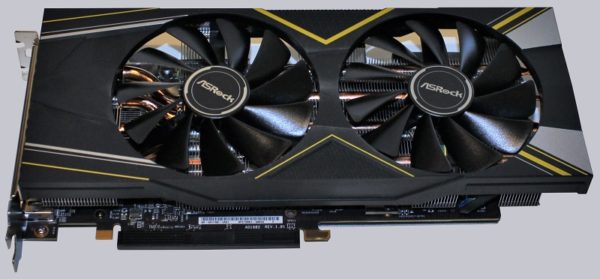
The backplate is really very chic and skilfully rounds off the design. In an enclosure with window, the ASRock Radeon RX 5700 Challenger D 8G OC is an eye-catcher. We also see here that it only takes four screws to disassemble the cooler. Unfortunately, ASRock does not connect the backplate to the board using thermal pads, e.g. to cool the voltage regulators section even though the backplate is made of metal.
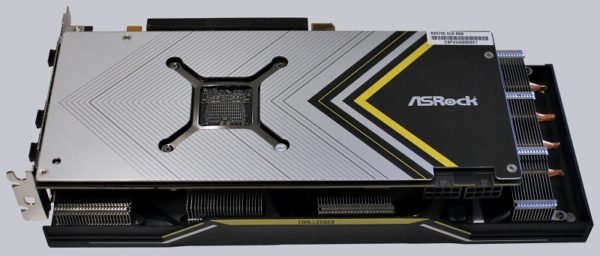
The upper edge can still come up with a “Challenger” lettering, we also find the two 8-pin PCI-e power connectors. The cooling fins and the rear fan protrude slightly beyond the board/backplate.

From the front, three of a total of four monitor connections are provided with protective caps … OK, one connection is certainly used 😉

Since we needed a stylish graphics card for the review of the NZXT H510i Phantom Gaming case, we were able to stage the ASRock Radeon RX 5700 Challenger D 8G OC properly and carry out the tests in a practical way.
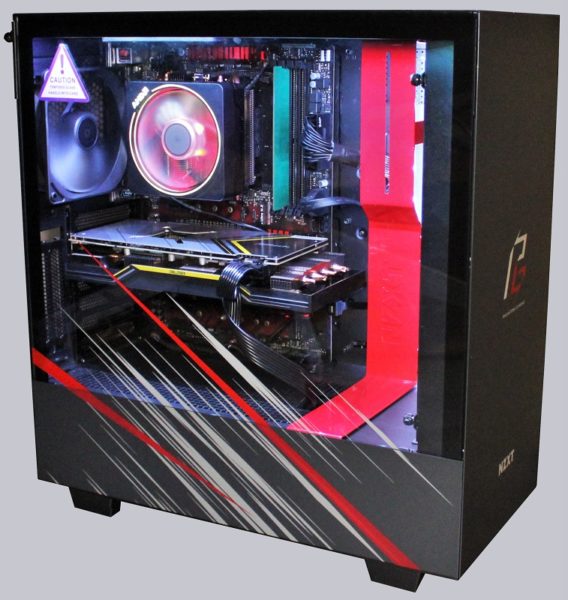
That would have brought us to the end of our little hardware tour. But the ASRock Radeon RX 5700 Challenger D 8G OC has more to offer. That is the …
Software …
Although ASRock also offers the driver for download on their website, it is the standard AMD driver, which is why we download the latest version (at the time of testing Adrenalin 2020 Edition 19.12.2) directly from AMD.
From ASRock we load the ASRock Tweaker in version 1.1.10. After installation, the app rewards us with a complete overview of the vital signs of the graphics card and the OC modes. In 2D mode, the RX 5700 Challenger D 8G OC clocks according to the display at 4/400 MHz. Here we also see the 0 dB mode in action: The fans are off in Windows mode.
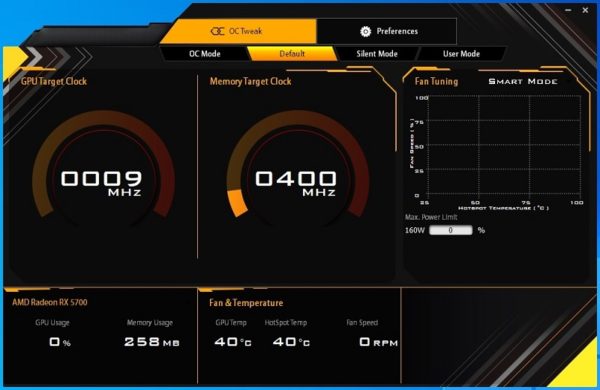
We then test the three modes by running the Heaven benchmark in the background to create a realistic load and to see how the clock rates behave, regardless of manufacturer information.
In the default mode, the GPU and RAM clock at approx. 1690/3500 MHz and leave the power limit untouched.
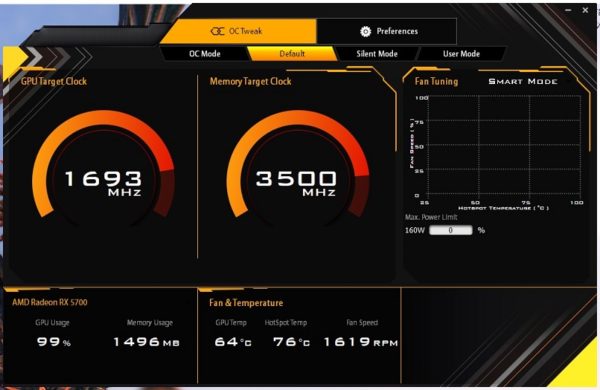
In OC mode, the GPU and RAM clocked at 1700/3500 MHz and raised the power limit by 10%.
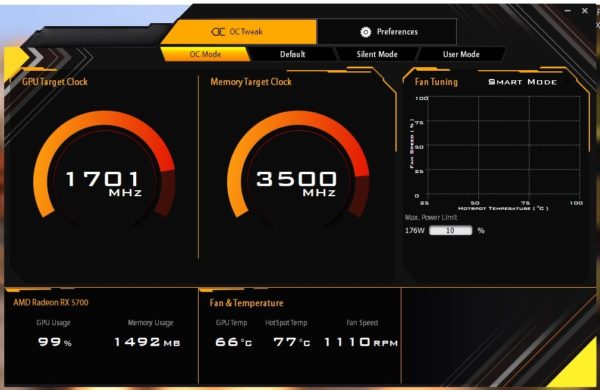
In silent mode, on the other hand, the GPU and RAM clock at 1660/3500 and the power limit is reduced by 10%.
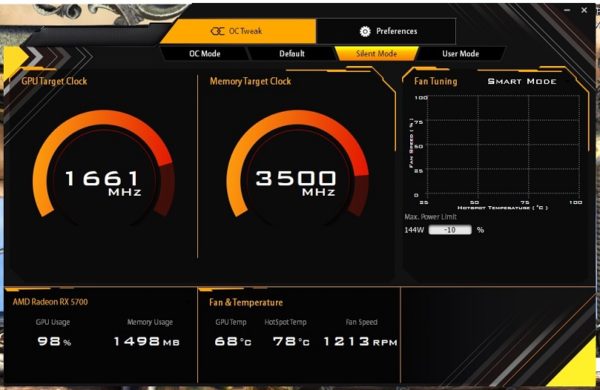
Last but not least, we can do all the controls ourselves in User Mode. A maximum of 1850 MHz GPU clock, 3720 MHz RAM clock can be set and the power limit increased by a maximum of 20%, whereby the GPU clock only slightly exceeds 1800 MHz under load.
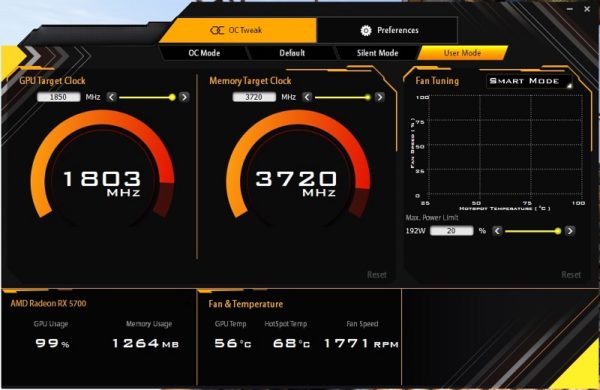
In all modes, we could also set the fan curve ourselves. In our view, the individual clock modes are very close to each other. We are excited to see how big the differences will be.
But now we would like to put our words into action and come to our practical test.
ASRock Radeon RX 5700 Challenger D 8G OC benchmark scores and practical tests …

